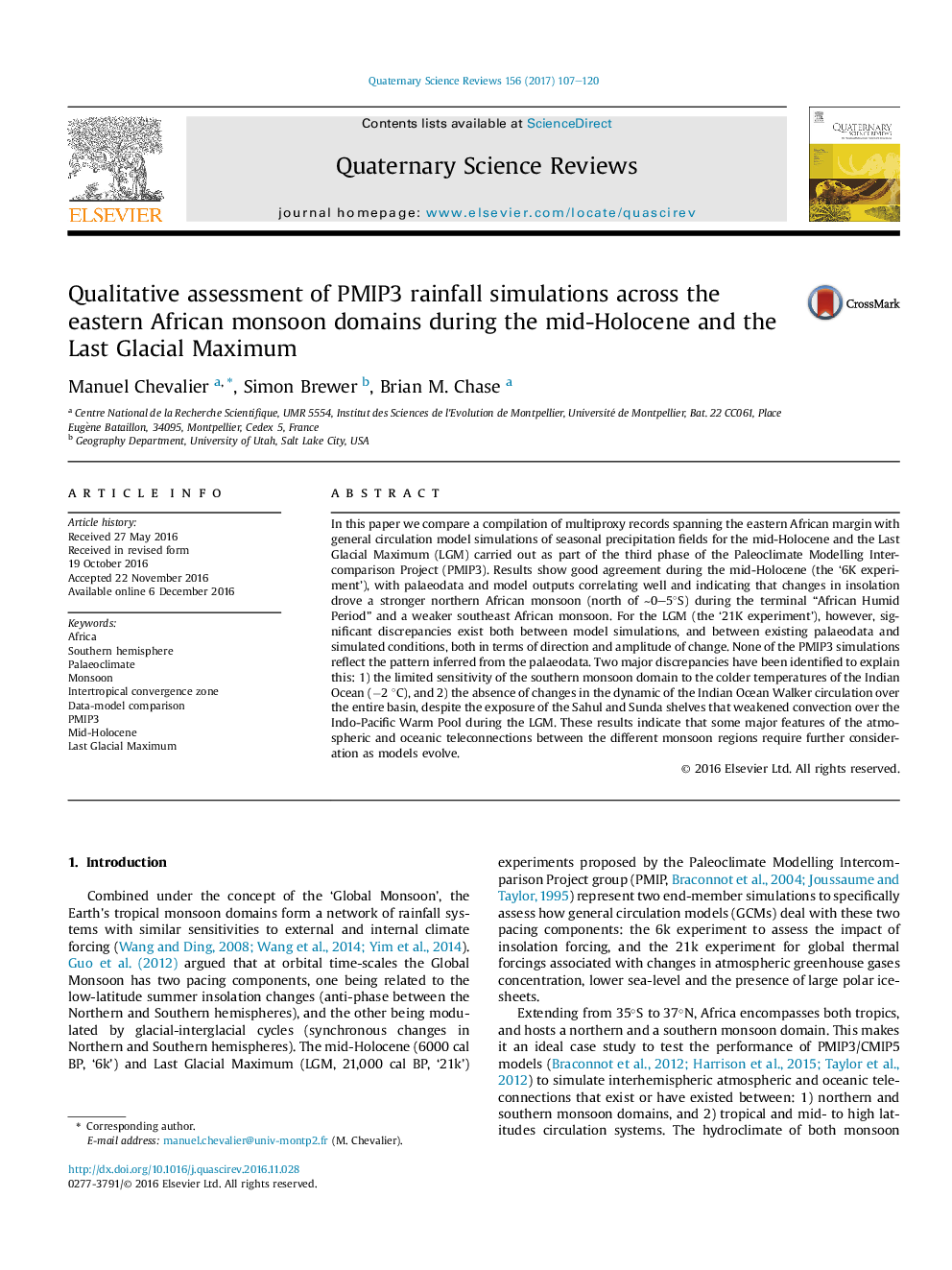| Article ID | Journal | Published Year | Pages | File Type |
|---|---|---|---|---|
| 5786791 | Quaternary Science Reviews | 2017 | 14 Pages |
Abstract
In this paper we compare a compilation of multiproxy records spanning the eastern African margin with general circulation model simulations of seasonal precipitation fields for the mid-Holocene and the Last Glacial Maximum (LGM) carried out as part of the third phase of the Paleoclimate Modelling Intercomparison Project (PMIP3). Results show good agreement during the mid-Holocene (the '6K experiment'), with palaeodata and model outputs correlating well and indicating that changes in insolation drove a stronger northern African monsoon (north of â¼0-5°S) during the terminal “African Humid Period” and a weaker southeast African monsoon. For the LGM (the '21K experiment'), however, significant discrepancies exist both between model simulations, and between existing palaeodata and simulated conditions, both in terms of direction and amplitude of change. None of the PMIP3 simulations reflect the pattern inferred from the palaeodata. Two major discrepancies have been identified to explain this: 1) the limited sensitivity of the southern monsoon domain to the colder temperatures of the Indian Ocean (â2 °C), and 2) the absence of changes in the dynamic of the Indian Ocean Walker circulation over the entire basin, despite the exposure of the Sahul and Sunda shelves that weakened convection over the Indo-Pacific Warm Pool during the LGM. These results indicate that some major features of the atmospheric and oceanic teleconnections between the different monsoon regions require further consideration as models evolve.
Keywords
Related Topics
Physical Sciences and Engineering
Earth and Planetary Sciences
Geology
Authors
Manuel Chevalier, Simon Brewer, Brian M. Chase,
